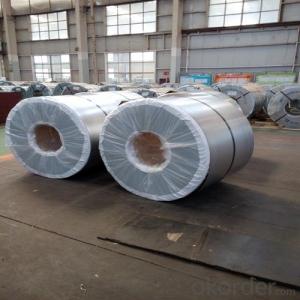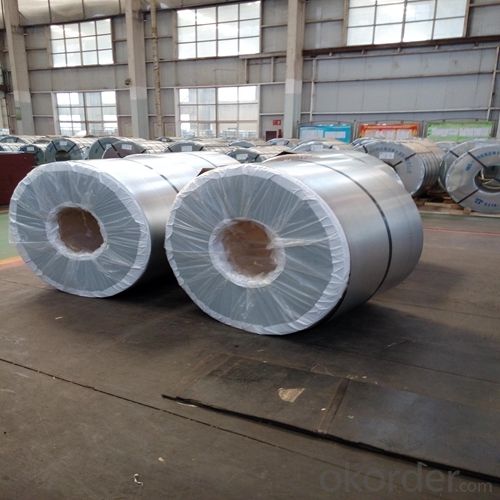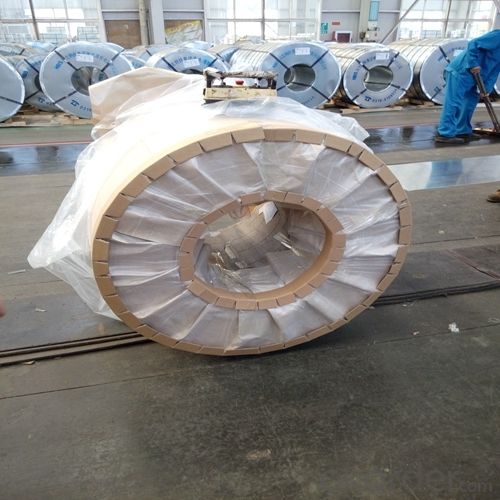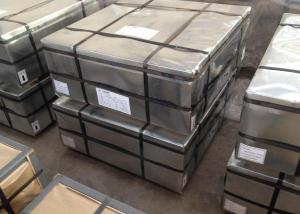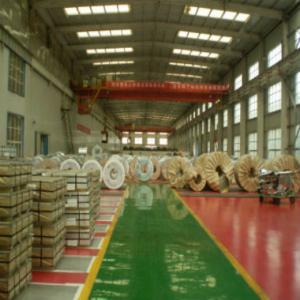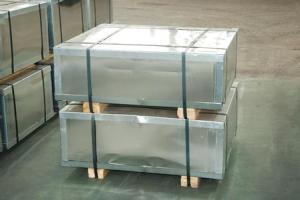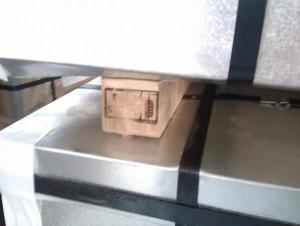Electrolytic Tinplate of Prime Quality for Metal Containers Use 0.30mm Thickness
- Loading Port:
- Shanghai
- Payment Terms:
- TT OR LC
- Min Order Qty:
- 25 m.t.
- Supply Capability:
- 15000 m.t./month
OKorder Service Pledge
OKorder Financial Service
You Might Also Like
Specification
1.Structure of Electrolytic Tinplate of Prime Quality for Metal Containers Use 0.30mm Thickness Description
Electrolytic Tinplate undoubtedly enjoys the pride of place as a packaging medium especially for food. It owes its unique position to its "nine layer sandwich structure", each of which contributes to its eminence as a packing material. The steel base of electrolytic tinplate provides the necessary strength and formability for can fabrication. The tin-iron alloy layer provides the bond between the steel and free tin layer. The free tin layer is not only responsible for the attractive bright finish and ease of solderability but is also non-toxic- a factor of vital importance in food packaging!
2.Main Features of the Electrolytic Tinplate of Prime Quality for Metal Containers Use 0.30mm Thickness
Appearance – Tinplate is characterized by its beautiful metallic luster. Products with various kinds of surface roughness are produced by selecting the surface finish of the substrate steel sheet.
Paintability and printability – Tinplates have excellent paintability and printability. Printing is beautifully finished using various lacquers and inks.
Formability and strength – Tinplates have got very good formability and strength. By selecting a proper temper grade, appropriate formability is obtained for different applications as well as the required strength after forming.
3.Electrolytic Tinplate of Prime Quality for Metal Containers Use 0.30mm Thickness Images
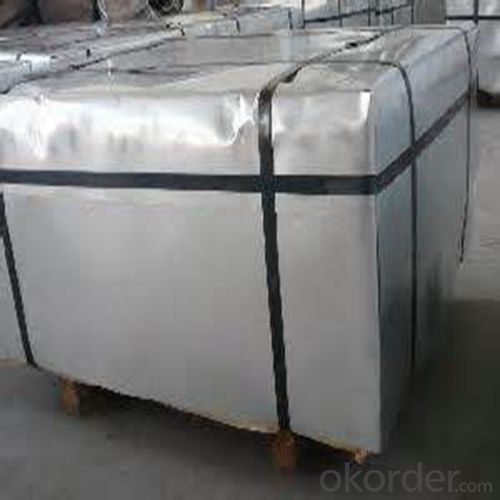
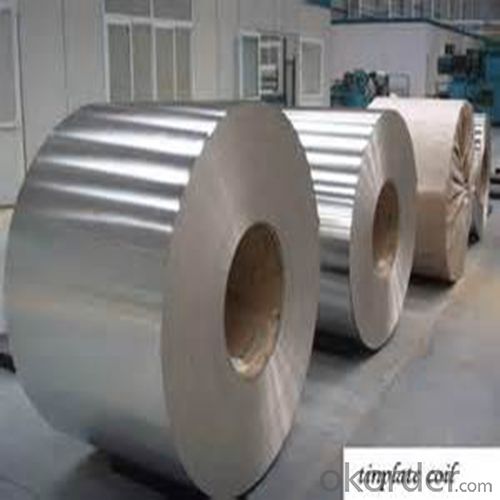
4. Electrolytic Tinplate of Prime Quality for Metal Containers Use 0.30mm Thickness Specification
Specification of :
Standard: ISO 11949 -1995, GB/T2520-2000,JIS G3303,ASTM A623, BS EN 10202
Material: MR,SPCC
Thickness:0.15mm - 0.50mm
Width: 600mm -1150mm
Temper: T1-T5
Annealing: BA & CA
Coil Inner Diameter: 508mm
Weight: 6-10 tons/coil 1~1.7 tons/sheets bundle
Passivation:311
Oil: DOS
Surface: Finish,bright,stone,matte,silver
5.FAQ of Electrolytic Tinplate of Prime Quality for Metal Containers Use 0.30mm Thickness
- What is tinning and how does it work?
Tinning is the process of thinly coating sheets of wrought iron or steel with tin, and the resulting product is known as tinplate. It is most often used to prevent rust.
- Do you only have prime quality tinplate?
We can supply both prime and second quality tinplate.
- Q: What are the chemical resistance properties of tinplate?
- Tinplate exhibits excellent chemical resistance properties due to its tin coating, which acts as a protective barrier against corrosion. It is highly resistant to acids, alkalis, and other corrosive substances, making it a preferred choice for packaging materials in the food and beverage industry.
- Q: What industries commonly use tinplate?
- The industries that commonly use tinplate include food and beverage packaging, cosmetics, pharmaceuticals, automotive, and electronics.
- Q: How does tinplate withstand corrosion?
- Tinplate withstands corrosion due to the thin layer of tin that is electroplated onto the surface of the steel. Tin is highly resistant to corrosion, providing a protective barrier that prevents the steel underneath from being exposed to moisture and oxygen, which are the main causes of corrosion.
- Q: What are the characteristics of different tin process
- Shapes: tinplate cans can be made into various shapes according to different needs, such as cans, cans, cans, circular elliptical horseshoe and trapezoid etc, can satisfy the different needs of product packaging, and the packaging container more change, promote sales. 6. recyclable: in line with international environmental requirements, in line with future product trends.
- Q: Does tinplate require any specific handling or storage conditions?
- Yes, tinplate requires specific handling and storage conditions. It should be stored in dry and well-ventilated areas to prevent corrosion. It is also important to avoid direct exposure to sunlight and extreme temperatures. Additionally, tinplate should be handled with care to prevent any damage or deformation.
- Q: Can tinplate be used for industrial containers?
- Yes, tinplate can be used for industrial containers. Tinplate is a type of steel sheet coated with a thin layer of tin, which provides corrosion resistance and durability. It is commonly used for manufacturing various types of containers, including those used in the food and beverage industry, aerosol cans, and paint cans.
- Q: What are the advantages of using tinplate for furniture?
- One of the advantages of using tinplate for furniture is its durability. Tinplate is known for its strength and resistance to corrosion, making it a long-lasting material that can withstand everyday wear and tear. Additionally, tinplate is also lightweight, making it easier to move and rearrange furniture pieces. Its versatility allows for various design possibilities, as it can be easily shaped and molded into different forms. Furthermore, tinplate is an environmentally friendly option as it can be recycled, reducing waste and promoting sustainability.
- Q: Can tinplate be used for packaging chemicals?
- Yes, tinplate can be used for packaging chemicals. It is a commonly used material for packaging due to its durability, resistance to corrosion, and ability to protect against light and oxygen. Tinplate is also known for its ability to withstand various temperatures and pressures, making it suitable for storing and transporting a wide range of chemicals safely.
- Q: What are the main challenges in the production of tinplate?
- The main challenges in the production of tinplate include ensuring consistent quality and thickness of the tin coating, preventing corrosion and rusting of the base metal, maintaining a smooth and defect-free surface, managing the tinplate's strength and ductility properties, and minimizing the environmental impact of the tin coating process. Additionally, sourcing sustainable and ethically-mined tin can be a challenge in some cases.
- Q: How is tinplate made?
- Tinplate is made by coating thin sheets of steel with a layer of tin through a process called electroplating. The steel sheets are first cleaned and prepared, then immersed in an electrolyte bath containing tin salts. When an electric current is passed through the bath, tin ions are attracted to the steel, forming a thin layer of tin on the surface. This tin coating enhances the steel's resistance to corrosion and provides a shiny and attractive finish.
Send your message to us
Electrolytic Tinplate of Prime Quality for Metal Containers Use 0.30mm Thickness
- Loading Port:
- Shanghai
- Payment Terms:
- TT OR LC
- Min Order Qty:
- 25 m.t.
- Supply Capability:
- 15000 m.t./month
OKorder Service Pledge
OKorder Financial Service
Similar products
Hot products
Hot Searches
Related keywords
